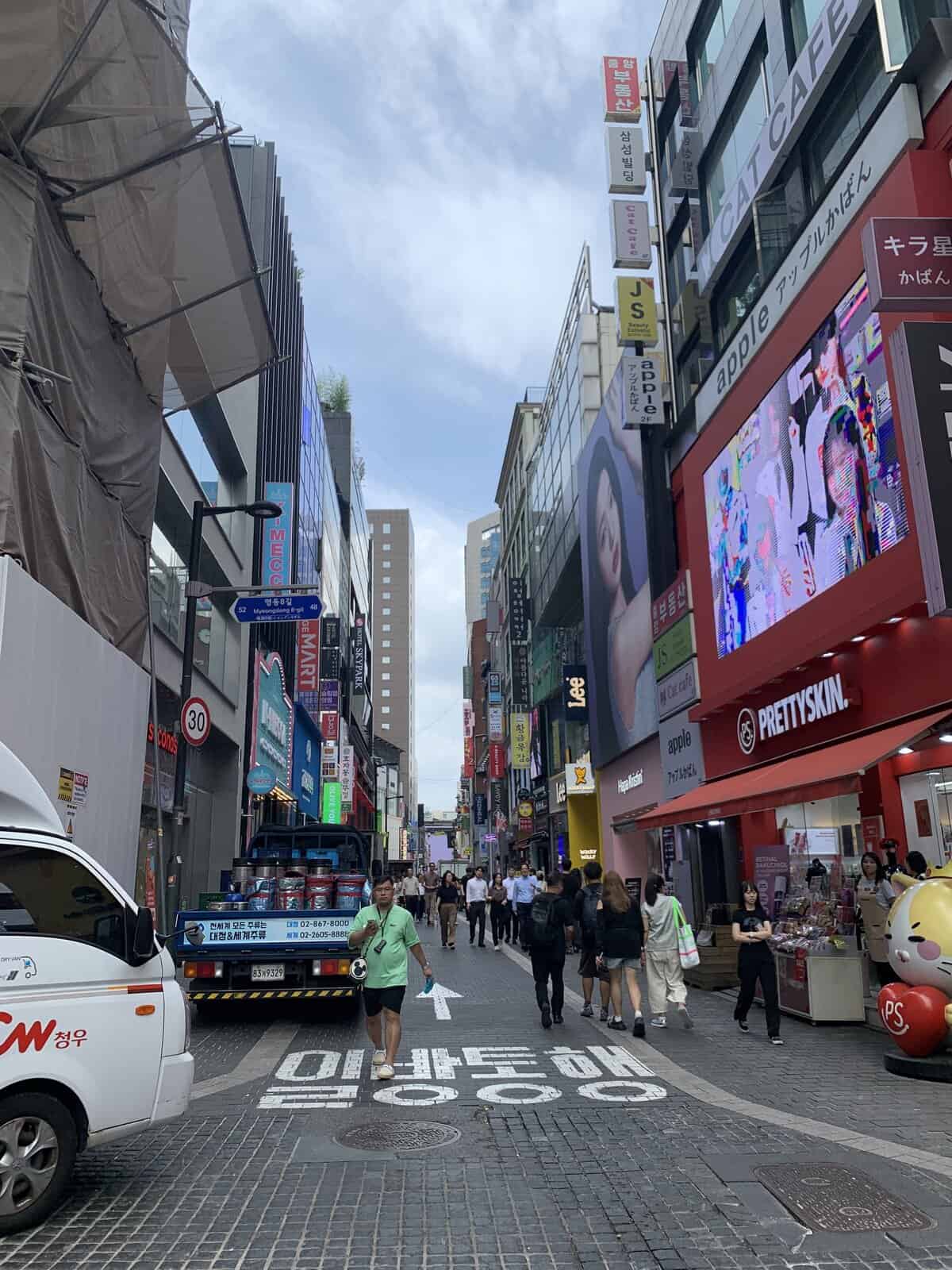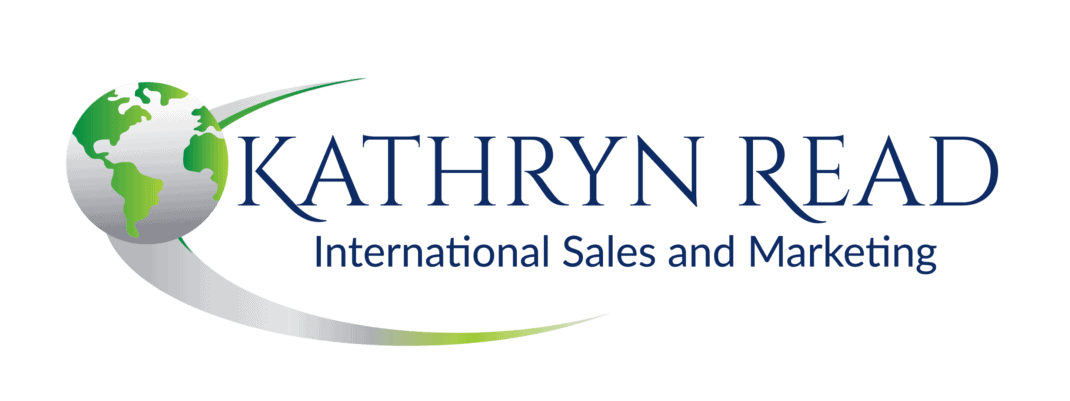Exporting food and drinks to South Korea can be both an exciting and bewildering experience. The country’s consumers are discerning, its retailers fast-moving, and its regulations famously intricate. To unpack how international brands can find success there, I sat down with Peter Park – Special Liaison Officer for Victoria at WPIC Marketing who helps high-growth food and beverage businesses in Australia bridge the gap with Asian markets.
Peter has spent years managing Asian expansion for Australian brands in China, Japan and Korea. Multilingual and multicultural – he speaks Korean natively, intermediate Chinese and conversational Japanese – he brings a uniquely practical view on what it really takes to succeed in these competitive markets.
Table of Contents
From Law to Logistics: A Non-Linear Journey
Kathryn: Peter, your background is in law originally, isn’t it? How did you find your way into international business?

Peter: Everyone’s journey is different, and mine certainly wasn’t linear. About fourteen years ago I studied law, but I soon realised I didn’t want to be a lawyer. I liked working with numbers – when you’re young and good at maths, you think “numbers plus money equals finance”. That led me to a role as an analyst in a venture capital family office that invested in start-ups.
From the very first day of my professional career I was working with entrepreneurs, seeing risk-taking up close, and that completely reshaped my idea of success. Growing up in suburban Australia, I’d been told that climbing the corporate ladder was the only way forward. But venture capital showed me that wealth and legacy often come from calculated risk.
I later moved into small business financial consulting, then a food start-up raising capital for Asian expansion, and finally became head of finance and supply chain for an American multinational managing operations across Asia – mainly in China. Those experiences gave me deep exposure to the region, particularly to the complexities of cross-border trade.
My wife is Taiwanese, I’m Korean, and I’ve lived in both countries. That multicultural experience sparked a genuine passion for Asia and eventually made me realise that exporting was where all my skills – finance, strategy and cultural understanding – came together.
Taking the Leap into Exporting Food and Drinks to South Korea
Kathryn: When you look back, it seems so logical, but at the time you can usually only see one jump ahead.
Peter: Exactly. I didn’t have a master plan; I just kept taking the next sensible step. Two years ago I decided to stop over-analysing and finally start my own export agency. I knew the industry wouldn’t be easy, but I also knew that if I could make a living doing what I enjoyed, that would already be a success. And this year I joined the WPIC team.
What Makes a Brand Ready for Korea?
Kathryn: Let’s get practical. What do you look for in a brand that makes you think Korea is the right market for them?
Peter: I ask five simple but revealing questions.
- Have they exported outside their domestic market before?
- Does the founder or export manager have previous export experience?
- Have they travelled overseas or attended trade shows?
- Do they understand how to budget realistically for export costs – even just product registration and samples?
- And finally, do they have the patience to see things through?
You’d be surprised how many companies want to export without ever visiting their target market. In consumer goods that’s a huge mistake. You need to stand in front of the shelf and see where your product would actually sit.
When it comes to exporting food and drinks to South Korea, I also look at the brand’s personality. Korean consumers love products that feel quirky, distinctive, and well-packaged. Simply being “from Italy” or “from Australia” isn’t enough.
Country of Origin – Helpful but Not Everything
Peter: Country of origin can still be powerful. Koreans tend to perceive European and Australian products as higher quality than those from parts of Southeast Asia, largely because of ingredient standards and long-standing reputation. But it shouldn’t be your only selling point.
Kathryn: Right. I’ve sold into Korea from Central and Eastern Europe, and brands are sometimes surprised that you have to specify the country – you can’t just say “Made in the EU”.
Peter: Exactly. Interestingly, a Polish brand now dominates the sterilised milk category with an 80 percent market share. Success like that changes perceptions and can open doors for other companies from the same country.
Doing the Homework
Kathryn: What kind of preparation should brands do before they approach you or a Korean importer?
Peter: First, identify your HS code – the international tariff classification. Use tools such as TradeLinks.com to see import data, growth rates, and top supplier countries. That tells you whether your category is expanding and how competitive it is.
If your country already has a reputation for that product – like Spain for olive oil – great. If not, you’ll need to budget for educating the market. It’s basic due diligence, but surprisingly few small brands do it.
When it comes to Australian products, the country has a strong image for beef and dairy but not yet so much for packaged consumer goods. Brands shouldn’t rely solely on “Australian = quality”. Innovation and clear differentiation matter more, so you need to think about how to narrate your story.

Export Entry Routes
Kathryn: For most small brands, how do you recommend they start?
Peter: I usually describe a three-step approach.
Step 1: Cross-border e-commerce.
Platforms like Coupang now make it easy to sell online without a local distributor. You won’t make big profits initially, but you’ll gain exposure, collect sales data, and show potential importers real evidence of demand. Think ahead to the next stages though and be careful with your pricing – you have to think about the margins that will be needed in later stages when setting the end consumer price.
Step 2: Distributor partnership.
Once you’ve proven there’s interest, work with an importer who can manage both online and offline sales. Korea moves fast – you can’t rely on one channel alone, but need an omnichannel approach from an early stage.
Step 3: Retail expansion.
With data and reviews behind you, your importer can then approach larger retail chains. That’s when momentum builds.
Market Kurly vs Coupang
Kathryn: You’ve mentioned Market Kurly before – how does that compare?
Peter: Market Kurly is brilliant for premium food and beverage brands. It’s smaller and more curated than Coupang, which sells absolutely everything. Kurly’s customers are loyal and love discovering new products.
We launched an Australian seasoning product there recently and it quickly racked up over a hundred reviews and strong sales. The same product on Coupang got six reviews and a fraction of the volume.
Kurly’s selectiveness actually works in your favour if your product has a strong USP and decent pricing. Consumers go there expecting novelty and quality.
Kathryn: That makes sense – and you can actually talk to their team, which is rare. Coupang can feel like throwing spaghetti at the wall to see what sticks.
Peter: Exactly – better to throw spaghetti at a smaller wall where people are paying attention!
Pricing with Precision
Kathryn: Online selling is fantastic for feedback, but pricing strategy can get tricky.
Peter: Definitely. Before listing on Market Kurly, we built a full value-chain model with the distributor to make sure everyone earned something. Kurly takes roughly a 40–45 percent margin, so if you discount heavily you’ll destroy profitability.
Consumers in Korea are extremely savvy. They’ll pay more for imported goods, but only if the price feels justified. We priced an Australian product at around six dollars, and buyers said, “I wouldn’t pay this for a domestic brand, but I will for an imported one because I expect higher quality.”
Kathryn: That’s why I always tell clients to map the full value chain early. It’s better to have tough discussions upfront than to realise six months in that no one’s making any money. And this is a key part of marketing in South Korea.
Support Systems and Trade Offices
Kathryn: Many countries have trade commissioners who can help with introductions and regulations.
Peter: Yes, and brands should absolutely use them. Your government’s trade office might not hold your hand, but they can make one valuable connection – maybe a booth at a show, or an introduction to a buyer. That can change everything.
We once had a brand exhibiting at Food & Hotel Seoul where a department-store buyer loved their product but had never imported before. The booth team introduced him to a trusted distributor, and that partnership made the deal work. Sometimes adding a local layer actually smooths the process.
Why You Need a Distributor
Kathryn: Smaller brands often think a distributor is just a cost, but in fast-moving Asian markets they’re indispensable.
Peter: Absolutely. Korean retailers often expect last-minute deliveries in small quantities. Without a local stockist, you simply can’t do that. A good distributor already has the logistics and relationships in place.
They also manage unpredictability. In Korea, plans can change overnight – shelf layouts, promotion dates, everything. You need someone on the ground who can react quickly.
Kathryn: Yes, that agility is critical. “Fast-moving consumer goods” applies to decisions as much as products!
Hot Categories to Watch – What are the best food exports for South Korea?
Kathryn: Which categories are growing fastest now?
Peter: Trend-based items like snacks and desserts come and go – tanghulu and the Dubai pistachio chocolates are recent examples. They can be fun, but they’re short-lived. It’s great if you happen to have one of those trending products and can just “surf the wave”, but it’s not a reliable way to build the market.
The real long-term opportunity when exporting food and drinks to South Korea lies in high-quality cooking ingredients and everyday staples – olive oil, butter, seasonings and similar items.
As more Koreans cook at home and focus on health, and as single-person households increase, these products have steady demand. Euromonitor projects double-digit growth from a small base, which makes it an excellent space for niche but committed exporters.
Regulation: Expect the Unexpected
Kathryn: Korean food regulation has a reputation for being strict & fairly slow.
Peter: That’s putting it mildly. It’s like the EU, Japan and US rulebooks all stitched together. The bureaucracy is risk-averse, so you need patience.
We had one product rejected over the word “natural” because we couldn’t meet a two-page technical definition of what “natural” means. Another product was refused because the peroxide level exceeded local limits. These are details no one checks in Australia but matter in Korea.
Kathryn: And sometimes you have to disclose every processing aid or additive, even if it’s just part of production. Brands are often shocked by how granular it gets and don’t want to “open up” their recipe books in that way to a foreign authority, but it’s the only way forward.
Patience Pays Off When Exporting Food to South Korea
Peter: Exactly. Importers can’t always predict the issues until they file the paperwork, so brands need to stay calm and work through them. You can’t expect instant results.
Be prepared to invest some money and, more importantly, time. The first twelve months are about learning, adapting, and solving problems with your partners. That process builds trust – and trust is what sustains your business once you grow.
Relationships Matter When Marketing in South Korea
Kathryn: And of course, relationships are everything. Go to the market, share a meal with your partners, and invest time in understanding them.
Peter: Absolutely. Visiting Korea changes your worldview. Even if your first venture doesn’t explode in sales, you’ll take away insights and friendships that last.
There’s nothing like standing in front of your category on a Korean supermarket shelf, seeing how products are priced, displayed and marketed. It grounds your entire export strategy in reality.
Advice to His Younger Self
Kathryn: Knowing what you know now, what advice would you give your younger self?
Peter: I’d say: find the market that genuinely resonates with you or your brand values. Don’t chase every opportunity. Focus deeply on one, and commit to it.
Exporting food and drinks to South Korea or anywhere in Asia isn’t easy, but the rewards are immense if you stick with it. Take every opportunity your government offers – even a free booth at a trade fair – because exposure leads to experience.
I did that early in my career, working in Korea and Taiwan, and it’s shaped everything I do today.
Who Should Reach Out
Kathryn: Finally, who should get in touch with you if they’re interested in working together?
Peter: Food and beverage brands, especially those in the cooking ingredients and staple categories. If you already have buyer interest but don’t know how to execute, I can help.
I mostly work with companies in Australia and New Zealand that want to expand into Korea or Taiwan, and I can provide guidance, connect you with distributors, or advise on strategy.
Kathryn: Fantastic. Thanks so much, Peter – this has been incredibly insightful.
Peter: Thank you, Kathryn. It’s always a pleasure discussing Korea. Hopefully we’ll inspire more people to give it a go – it’s such an exciting market.
Key Takeaways
- Success in Korea requires patience, preparation and partnership.
- Country of origin helps, but differentiation and story matter more.
- Market Kurly is a strong entry platform for premium food and drink brands.
- Understand your value chain before pricing – profit margins vanish quickly.
- Above all, visit the market. Relationships and first-hand experience make all the difference.
✅ This interview originally appeared on “International Expansion Explained” with Kathryn Read.
You can reach out to Peter directly here:
- LinkedIn: https://www.linkedin.com/in/peterpark92/
- Email: Peter.park@wpic.co
- Newsletter: https://ypa.beehiiv.com/
Watch the full discussion here:
Thinking that working with a consultant would accelerate your international expansion?
If you’d like to learn more about working with me for support on your internationalisation projects or personal export knowledge, you can book a 30 minute international clarity call here.
If you haven’t already signed up for my free e-book about how to select which international market to enter next, you can do so here, or using the form below.
If you enjoyed this content please share it on social media or recommend it to your network.
Pin this post for later!
If you are interested in doing business in South Korea, you might also find these posts helpful:
- A guideline to entering the food and beverage market in South Korea
- Finding the right importer
- Understanding Consumers
- Entering the Korean Market by Selling on Coupang Global Marketplace
- Why Optimising Naver blog posts pays off
- International Customer Service in Korea: Dealing with Media Crises
Culture:
Lunar New Year Traditions around Asia






